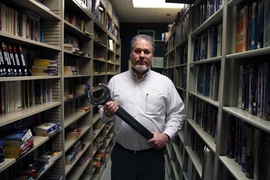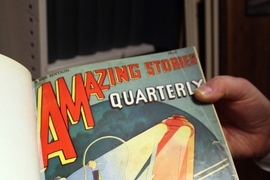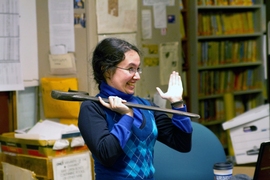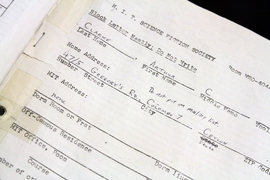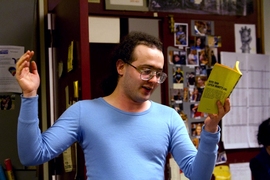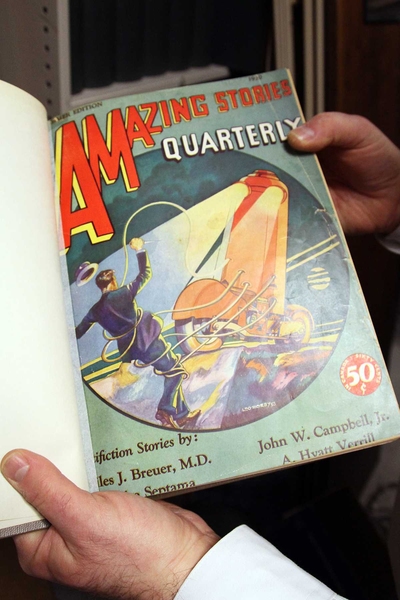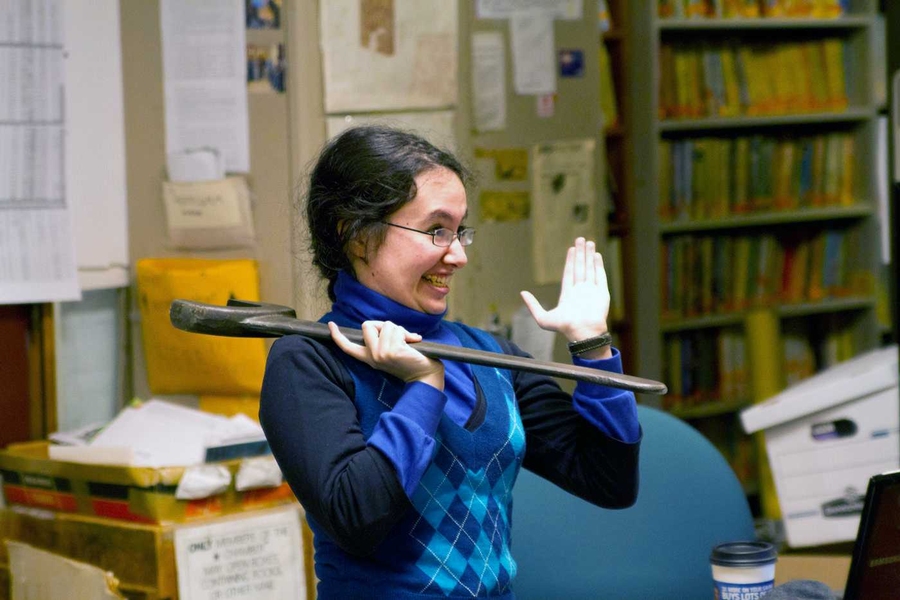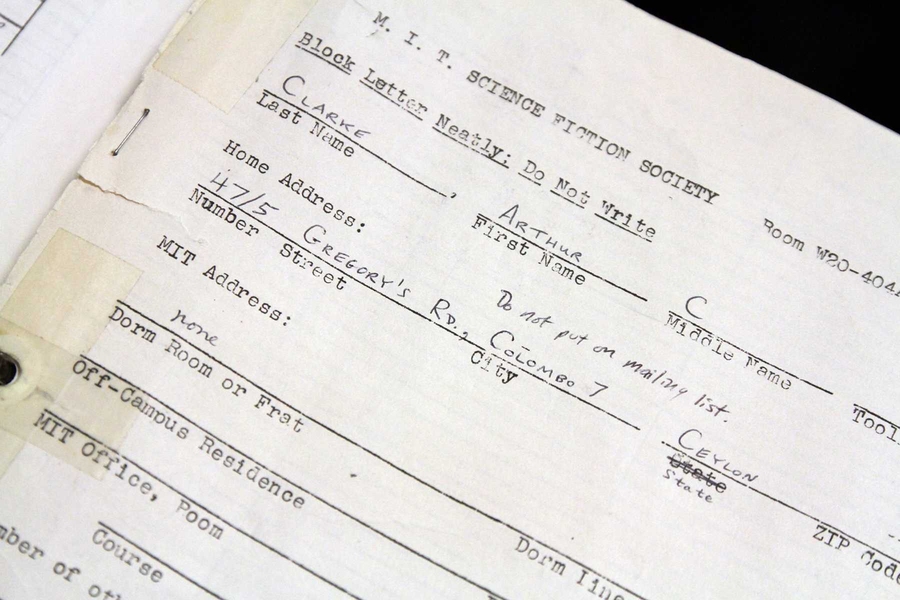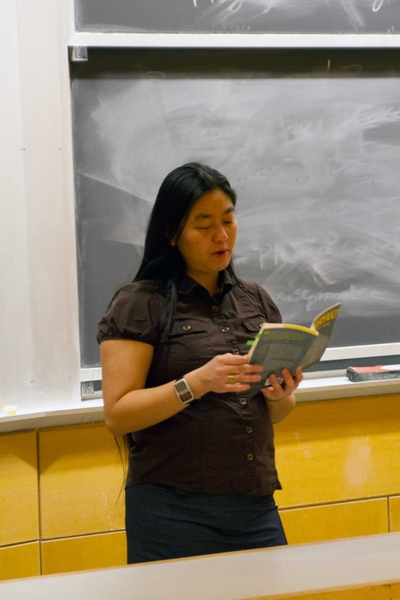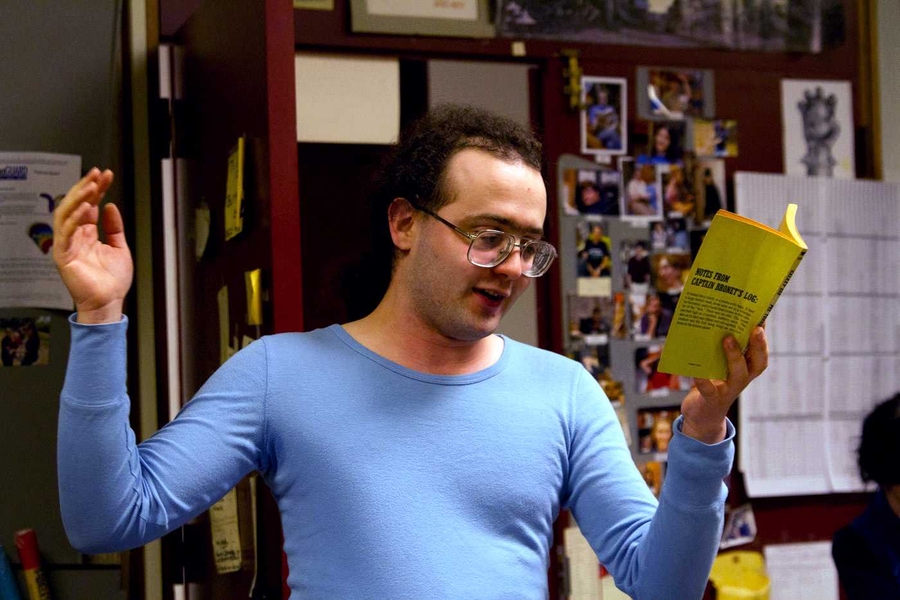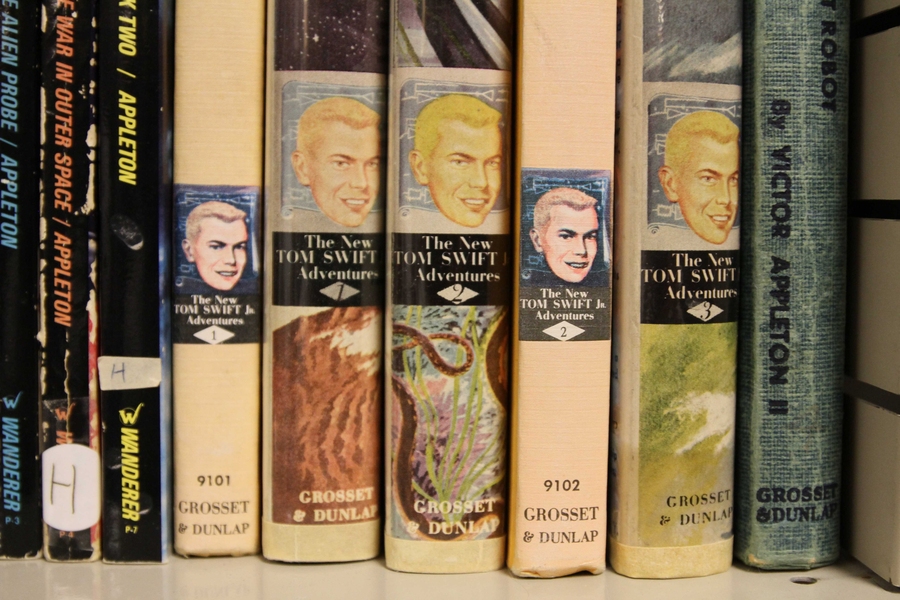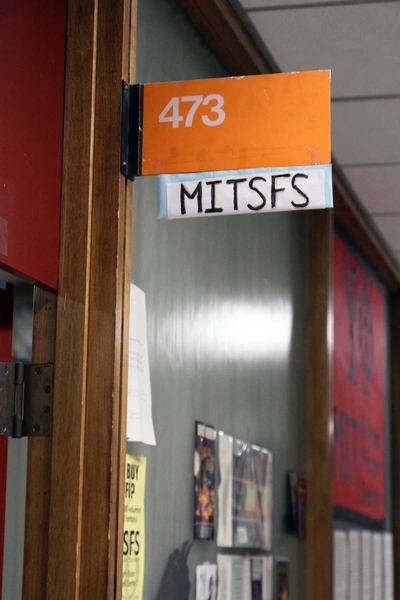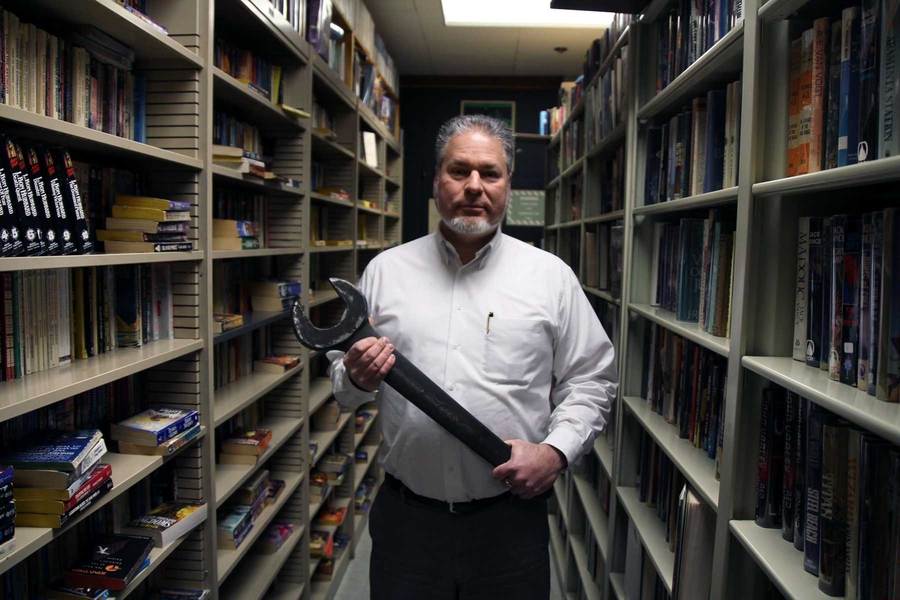A dedicated subsection of the Society meets weekly to discuss library affairs, as they and their predecessors have since the Society’s founding in 1949. In a typical meeting, a student will call members to order with the piercing clang of a three-foot wrench on the end of a desk. The meeting will likely include a medley of unusual philosophical discussions, whimsical sidebars, and maybe even a dramatic reading of poorly written literature.
“The tone at our meetings is largely humorous,” says D.W. Rowlands, an MIT graduate student and veteran member of the Science Fiction Society. “There’s generally not much ‘real business.’”
Despite the lack of actionable agenda items at meetings, the group does vote on motions. In November, in honor of the Thanksgiving holiday, the Society passed a motion to develop a vegan turkey made of bananas, although they shot down a measure that sought to develop a banana-colored turkey.
Each member votes four times — once with each limb — on every motion. This allows a member, for example, to support a measure with his left arm and right leg, while dissenting with his right arm and abstaining with his left leg.
Rowlands serves as the Society’s “onseck,” short for honorable secretary. Like many elements of the Science Fiction Society, officers’ titles are a nod to an obscure piece of science fiction literature or a long-forgotten inside joke.
“Sometimes we carry on traditions, but we have no idea where they originated,” says Jade Wang, an alumna of the Science Fiction Society who graduated from MIT with an SB and an MEng in 2002 and a PhD in 2008, all in electrical engineering.
About 20 members of the Science Fiction Society are designated as “keyholders.” They serve a number of important roles, most importantly as volunteer librarians. Checking out literature, opening and closing the library, and ensuring that books are in good condition are all responsibilities of these dedicated Society members.
With more than 40 years of experience, Jack Stevens ’76 is the longest serving active keyholder. He determines the library’s weekly schedule, which he bases on keyholder availability and posts to the Society’s website, during his regular Wednesday night shifts. For a period, Stevens also managed the Science Fiction Society’s amateur science fiction magazine, the Twilight Zine.
“Science fiction has had an 80-year tradition of amateur publication,” Stevens says. “It’s another fun thing to do. It’s a chance to be involved with science fiction in a different way.”
Some Science Fiction Society members have gone on to become widely published authors. Society alumna Jennifer Chung ’02 entered the 2011 International 3-Day Novel Contest. In just 72 hours, Chung wrote a science fiction novel about family and chicken teriyaki, a food that is both ubiquitous in her hometown of Seattle and forbidden by her own vegetarian diet. Chung’s novel, Terroryaki, toppled the other 547 contest entrants and is now available at bookstores and libraries around the world, including the Science Fiction Library at MIT.
On Nov. 18, Chung returned to campus to read selections from her novel to dozens of captivated fans. She signed copies of her book and fielded a range of questions on her work.
The Science Fiction Society has a number of connections to other science fiction authors as well. Society alum Guy Consolmagno ’74 has penned a significant body of science and religious literature as an astronomer for the Vatican Observatory. Before his death, prolific science fiction author Isaac Asimov attended the Society’s annual picnics.
With its focus directed overwhelmingly toward preserving the MIT Science Fiction Library, the Society serves a unique niche for science fiction readers. The group meets every Friday and organizes a weekly movie series, yet members of the group distance themselves from the title of “science fiction fan.”
The New England Science Fiction Association (NESFA) is a 1970s creation of former MIT Science Fiction Society members who decided to enter the world of “fandom.” NESFA hosts a massive Boston-area science fiction convention, Boskone, annually. Although it maintains some ties with NESFA, the MIT Science Fiction Society’s only participation in Boskone is through selling its surplus books.
“Our primary mission is to be a library, not a discussion group,” Rowlands says. He says that the group refrains from participating in “fannish” activities. Instead, the Society covets its motto: “We’re not fans, we just read the stuff.”
The Science Fiction Society’s dedication to its role as a library curator is steadfast. In operation for more than 60 years, the library stands as the oldest collegiate science fiction collection in the country, and its role has changed little since its beginnings.
“It’s been a constant. It’s kind of neat that way,” Stevens says. “Here is a niche bit of literature that has inspired a whole lot of people at MIT and elsewhere. The Science Fiction Society is all for fun and enjoyment and keeping one’s sense of wonderment, because that’s what science fiction is all about.”
For more information, visit the Science Fiction Society’s website.
